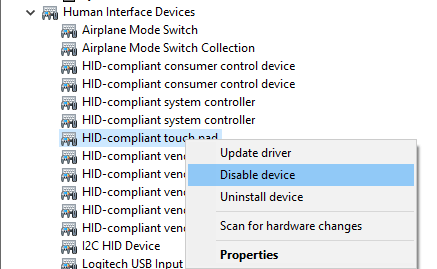

In this case, you may need to turn off the touchpad temporarily or permanently to carry on with what you were doing with ease. For example, your hand may accidentally brush against the touchpad while typing or playing a PC game. However, it is common for touchpads sometimes to act up, which is annoying. Some users prefer using the touchpad to an external mouse or other peripheral devices, while others just tolerate using them. The touchpad is used as the standard pointing device in laptops and can be convenient when you don’t have an external mouse. Then, use the Space bar to enable your touchpad.

On the TouchPad settings menu, press Tab to select toggle switch. Then, select Touchpad by pressing the Tab key and using the Down-arrow key and Enter. Or, use the keyboard shortcut Windows+ I key to open the Settings menu, select Devices using the Tab key and Right-arrow key, and hit Enter. Press the Windows key and type in touchpad settings, and press Enter. You can also use your keyboard to enable the touchpad. Then, click on the ClickPad Enable button to enable the touchpad and apply the change. If you do not see a touchpad icon, click the small arrow toward the right side of the taskbar to reveal hidden icons.If your touchpad settings menu has no toggle switch, click Additional settings to call up the Mouse properties menu under Related settings. To get to the program from Windows 8 desktop mode, double-click the touchpad icon on the taskbar to get to the settings. If your mouse control panel has no tabs with such settings and you cannot find another control panel within Windows 8 for the trackpad, the computer may have a dedicated program that controls the multitouch functions.įor example, some Windows 8 laptops made by Asus have Smart Gesture software to handle trackpad behaviour. The options for turning off gesture-based commands are usually there. Depending on your laptop, you may see a tab called device settings, trackpad or multitouch gestures. In the control panel, open the mouse icon. Search for "mouse" in the Windows 8 search bar, or if you are in the desktop mode, open the control panel press the Windows and X keys to get a shortcut menu with a control panel option. The laptop's manual or manufacturer's online support page for your model should have the instructions, but in many cases you can turn off the zooming and other gestures in the mouse settings. Locating the settings to do so, however, varies based on your laptop make and model. If you find these features more annoying than helpful, you can turn them off. Some laptops come with trackpads that support "multitouch gestures" - quick finger movements you can do for basic tasks like opening files or scrolling through web pages.


 0 kommentar(er)
0 kommentar(er)
